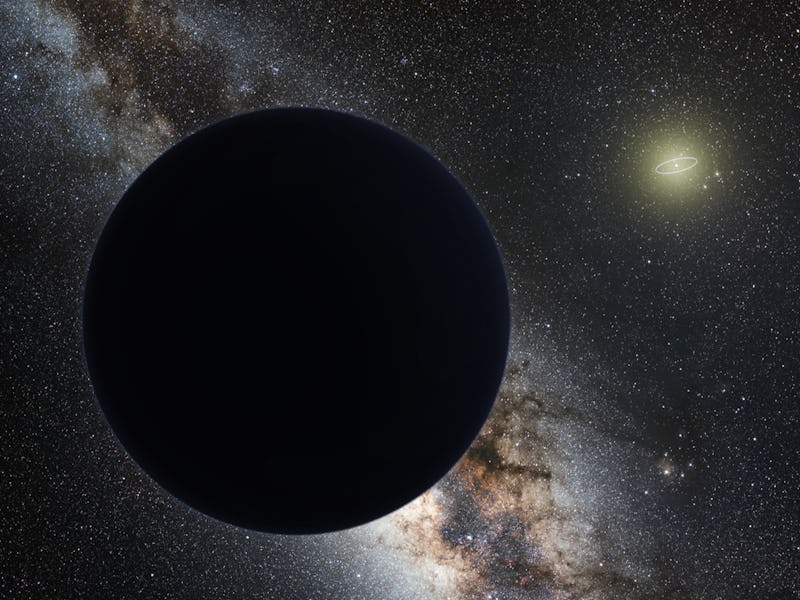Astronomers looking for the mysterious, elusive Planet Nine — supposedly lurking out beyond Neptune — now believe its massive gravity could have had a huge effect on how the solar system works. At the 48th annual Division of Planetary Sciences meeting hosted by the American Astronomical Society, researchers presented evidence that the unseen world could be literally tilting the solar system.
In January, astronomers caused quite a ruckus when they revealed that our solar system could have a ninth planet after all. (Sorry Pluto lovers, we’re not talking about the beloved dwarf planet getting a status upgrade.) We’re talking about the very real possibility that a massive planet more than 10 times the mass of the Earth could exist in the outer reaches of the solar system.
Caltech astronomer Mike Brown and graduate student Elizabeth Bailey presented research yesterday which bolstered the case that Planet Nine exists. “We have been studying this planet by searching for all of the things it does to the solar system,” he said.
One of those things, apparently, is causing the rest of the solar system to tilt to one side.
The sun and the planets formed from the same primordial ingredients billions of years ago and in the same area, so we would expect them to all orbit in the same flat plane, right? Not exactly.
All of the planets orbit in a flat plane with respect to the sun, and roughly within a couple degrees of each other,” Brown explained. “That plane, however, rotates at a six-degree tilt with respect to the sun — giving the appearance that the sun itself is cocked off at an angle.”
According to Brown, if Planet Nine exists, it would orbit the sun at a distance 500 times that of Earth’s solar orbit — giving it the perfect leverage for throwing the solar system off-kilter.
Astronomers have been puzzled by this tilt for years, but could not come up with a proper explanation. Until now.
“Planet Nine may have tilted the other planets over the lifetime of the solar system,” Bailey explained in a recent paper that was accepted for publication in the Astrophysical Journal.
“Because Planet Nine is so massive and has an orbit tilted compared to the other planets, the solar system has no choice but to slowly twist out of alignment,” she said.
No one has seen the planet via telescope yet, but Brown is confident that will happen in the near future. “Armed with simulations, we have considerably narrowed the search area to 400 square degrees of sky. I think by the end of next winter someone will find it,” Brown said.
Brown explained that the team is trying to understand the physics of the massive planet in order to understand where it is. “By refining our models and our understanding, we can make it easier for everyone to find it in the future.”
